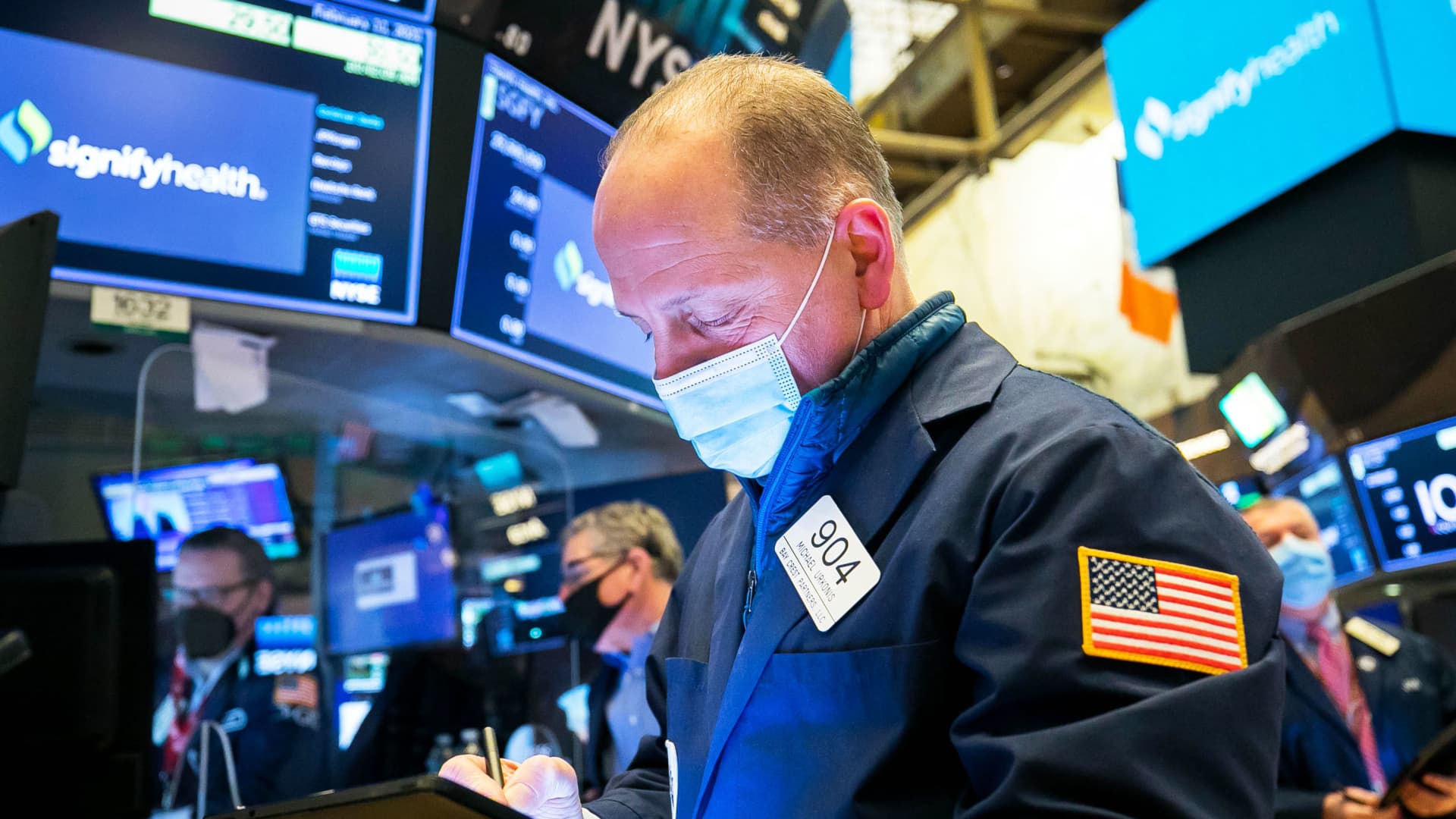Bond yields slip, key yield curve inversion narrows as investors consider the Fed’s next move

A key Treasury yield curve inversion narrowed on Friday, after hitting its steepest level since 2000 the previous day.
Yield-curve inversions, or when shorter-term government bonds have higher yields than longer-term ones, are often viewed by markets as signs that a recession is coming.
But the gap between the 2-year and 10-year yields shrunk Friday as traders weighed the possibility that the U.S. Federal Reserve will hike interest rates by 75 basis points at its next meeting, not 100 basis points.
At 2 a.m. ET, the 2-year yield (which is more sensitive to changes in monetary policy) slipped 3 basis points to around 3.1138%. The yield on the benchmark 10-year Treasury note fell just over 1 basis point to 2.9447%
Meanwhile, the yield on the 30-year Treasury bond traded rose slightly to trade around 3.1049%. Yields move inversely to prices, and a basis point is equal to 0.01%.
Treasurys
Federal Reserve Governor Christopher Waller said Thursday that he supports a 75 basis point hike at the central bank’s next meeting, slated for July 26-27. However, he said he will be watching the data and is open to a larger move if he believes it is needed.
It comes after a growing number of analysts were saying a 100-basis-point hike could be on the table, after inflation continued to rise more than expected.
Investors are also digesting some disappointing bank earnings from Thursday. JPMorgan Chase said it had built up reserves for bad loans, and suspended share buybacks, while Morgan Stanley reported weaker-than-expected investment banking revenue.
More major bank results are expected Friday from Wells Fargo and Citigroup.
On the economic front, June retail sales, along with import and export prices, are due Friday at 8:30 a.m. ET.
The June industrial production report is expected at 9:15 a.m. ET and preliminary July data for consumer sentiment is out at 10 a.m. ET.
— CNBC’s Sarah Min and Jeff Cox contributed to this report.




